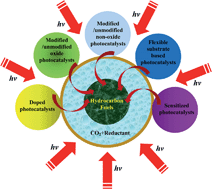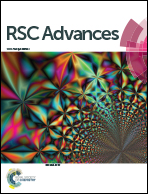A review on advances in photocatalysts towards CO2 conversion
Abstract
The present situation reveals the dependence on fossil fuels, which is seriously accountable for two major impediments: (i) global warming due to increasing atmospheric carbon dioxide (CO2) and (ii) the alarming consumption of energy assets. The reduction of green CO2 in terms of producing solar fuels would be an expedient accomplishment to resolve both problems, simultaneously. The review classifies different categories of photocatalysts applied in foregoing photocatalytic CO2 conversion processes with detailed information concerning operating conditions, preparation techniques and physical properties of catalysts, radiation sources, and selectivity. The categories are concentrated on metal oxides, sulfides, phosphides, and p-type and nonmetal oxide semiconductors. In addition, their modification by doping co-metals, noble metals, transition metals and non-metals for visible light response is emphasized. Besides, for harnessing solar fuel, the recent prospect and advancement of novel sensitized catalysts by dye elements, phthalocyanines and quantum dots (QDs) are also highlighted in this review. This technology needs more efficient solar active catalysts to increase production rates as well as selectivity. The recent scenario indicates that massive prospects and opportunities still exist in this area for further investigation on catalyst selection.

- This article is part of the themed collection: Luminescence and photophysical properties of metal complexes

 Please wait while we load your content...
Please wait while we load your content...